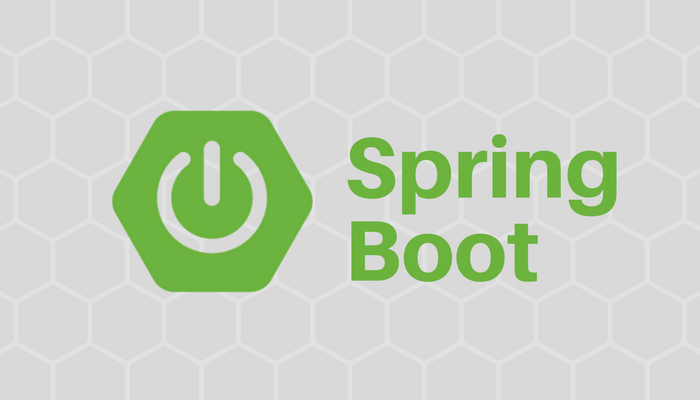Learn what Spring Boot is, why it matters, how it works, and how you can build production-ready Java applications — the smart way.
Table of Contents
- Introduction
- What is Spring Boot?
- Why Use Spring Boot?
- How Spring Boot Works (Under the Hood)
- Getting Started with Spring Boot (Hello World)
- Spring Boot Key Features
- Spring Boot Best Practices
- Common Mistakes to Avoid
- FAQs
- Conclusion
1. Introduction
If you’re a Java developer, you’ve likely heard of Spring Boot — a popular framework that simplifies building Java-based applications. Whether you’re building microservices, APIs, or full-stack web apps, Spring Boot helps you build fast, test easily, and deploy confidently.
This guide will take you from zero to clarity — with real code examples, diagrams, and answers to common developer questions.
2. What is Spring Boot?
Spring Boot is an open-source Java-based framework developed by the Spring Team at Pivotal (now VMware). It is built on top of the Spring Framework and provides a convention-over-configuration approach to building production-ready applications.
👉 In simple terms:
Spring Boot = Spring + Auto Configuration + Embedded Server + Production Features
It drastically reduces boilerplate code and gives developers the power to focus on business logic, not configuration.
3. Why Use Spring Boot?
Here’s why Spring Boot has become the go-to choice for Java developers:
| Feature | Benefit |
|---|---|
| 🔧 Auto Configuration | Less XML/Java config needed |
| 🌐 Embedded Web Server | No need to deploy WAR to Tomcat |
| 🚀 Production-Ready | Metrics, health checks, etc. |
| 🧪 Test Support | JUnit, Mockito integration |
| 📦 Fat JAR | Easy deployment |
4. How Spring Boot Works (Under the Hood)
Spring Boot makes smart decisions using auto-configuration based on the libraries you include in your project.
For example:
<!-- pom.xml -->
<dependency>
<groupId>org.springframework.boot</groupId>
<artifactId>spring-boot-starter-web</artifactId>
</dependency>
Because you included spring-boot-starter-web, Spring Boot will:
- Set up Tomcat as the embedded server
- Configure Spring MVC
- Scan for
@Controllerand@RestControllerannotations - Create an application context automatically
This behavior is made possible by @SpringBootApplication, which combines:
@Configuration@EnableAutoConfiguration@ComponentScan
5. Getting Started with Spring Boot (Hello World)
Let’s create a simple Spring Boot app.
Step 1: Use Spring Initializr
Visit start.spring.io:
- Language: Java
- Spring Boot: 3.2.x
- Project: Maven
- Dependencies: Spring Web
Download and unzip the project.
Step 2: Create a Controller
@RestController
public class HelloController {
@GetMapping("/")
public String hello() {
return "Hello, Spring Boot!";
}
}
Step 3: Run the App
Run your app using:
./mvnw spring-boot:run
Visit: http://localhost:8080
🎉 You just created your first Spring Boot application!
6. Spring Boot Key Features
Here are some features that make Spring Boot powerful:
1. Starters
Pre-configured dependencies (e.g., spring-boot-starter-data-jpa, spring-boot-starter-security)
2. Embedded Servers
Support for Tomcat, Jetty, and Undertow — embedded in the app
3. Actuator
Exposes endpoints like:
/actuator/health/actuator/metrics/actuator/info
4. DevTools
Hot-reloading, fast refresh during development
7. Spring Boot Best Practices
Here’s how to make the most out of Spring Boot:
| Practice | Description |
|---|---|
| Use Profiles | Use application-dev.yml, application-prod.yml for config separation |
| Write Tests | Use @WebMvcTest, @DataJpaTest |
| Keep Config Externalized | Store secrets and DB creds in environment variables |
| Use Virtual Threads (Java 21) | Use @Async or Project Loom for concurrency |
| Monitor App | Use Spring Boot Actuator + Prometheus |
8. Common Mistakes to Avoid
| Mistake | Fix |
|---|---|
| ❌ Including too many starters | ✅ Only include what you need |
| ❌ Not using profiles | ✅ Separate dev/test/prod configs |
| ❌ Not monitoring production apps | ✅ Use Actuator |
| ❌ Large monoliths | ✅ Break into microservices where possible |
| ❌ Blocking calls in reactive apps | ✅ Use WebFlux + non-blocking DB drivers |
9. FAQs
Q1: Is Spring Boot a framework or tool?
A: It’s a framework built on top of Spring to simplify configuration and deployment.
Q2: What’s the difference between Spring and Spring Boot?
A: Spring is the core framework. Spring Boot is an extension that simplifies usage.
Q3: Can I use Spring Boot with Java 21?
A: Yes, Spring Boot 3.x fully supports Java 21. You can also leverage virtual threads for performance.
Q4: How do I deploy a Spring Boot app?
A: Package it as a JAR and run it directly, or use Docker/Kubernetes for containerized deployments.
Q5: Is Spring Boot suitable for microservices?
A: Absolutely! It’s designed with microservice architecture in mind.
10. Real-World Example
Let’s look at a simple RESTful API using Spring Boot:
@RestController
@RequestMapping("/api/products")
public class ProductController {
private final ProductService service;
public ProductController(ProductService service) {
this.service = service;
}
@GetMapping
public List<Product> getAll() {
return service.getAllProducts();
}
@PostMapping
public Product save(@RequestBody Product p) {
return service.save(p);
}
}
Use JPA for database connectivity, Actuator for health checks, and Docker for deployment.
11. Conclusion
Spring Boot empowers Java developers to build powerful, production-ready applications with minimal configuration.
With built-in support for testing, monitoring, REST APIs, microservices, and even reactive programming — Spring Boot is the ultimate toolkit for modern Java development.
Whether you’re a beginner starting out, or a pro looking to scale, Spring Boot saves time, reduces bugs, and boosts productivity.
